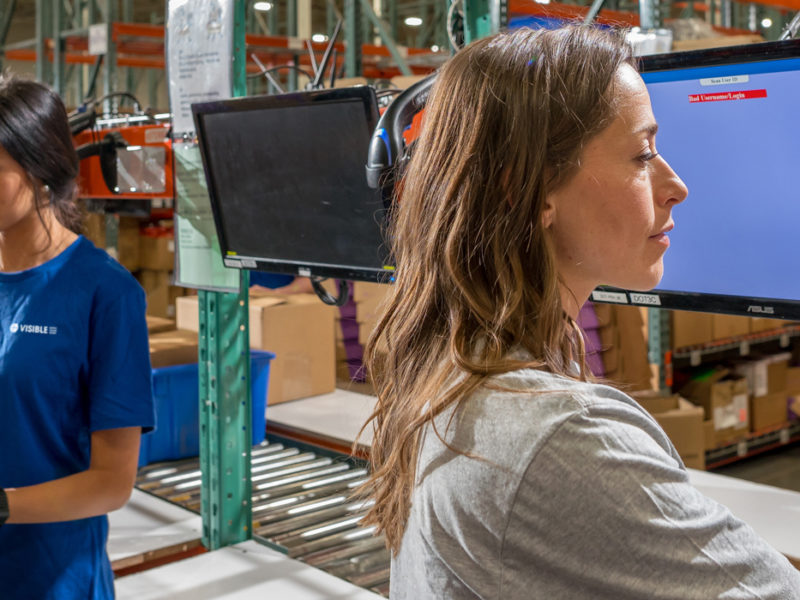Set it in Motion: Going Above and Beyond Wellness
Wellness programs can do a lot for a company—encouraging employees to be healthier may mean lower insurance costs for them and the company, as well as the increased productivity that comes with fewer sick days.
But wellness programs can be tough to craft. On one hand, they shouldn’t be too strenuous and alienate the workers who need the most encouragement to change their lifestyles; on the other, they can frequently be too easy for those who are already active.
Enter UnitedHealthcare MotionTM, a program that helps encourage employees of all fitness levels to achieve three daily walking goals—and get rewarded. Employees can earn $1 per day for hitting each of the three walking goals, for a total of $3 a day that adds up to more than $1,000 a year that can go toward out-of-pocket medical expenses like copays, prescriptions or deductibles. If an employee’s spouse is also enrolled, they, too, can earn financial incentives for hitting the daily goals.
The three goals include frequency, intensity and total steps achieved.
Take six brief walks a day? Earn a dollar. Take one brisk, 30-minute walk? Earn another dollar. Hit 10,000 steps during the day? That’s a dollar, too. Steps are tracked with an activity tracker and free app, though participants can also use their own Motion-compatible device (like a FitBit Charge 2TM) to track their steps.
Each goal has its own health benefit. The short walks break up what might otherwise be a sedentary workday, helping to prevent cardiac and metabolic problems that can crop up with prolonged inactivity, even if a person is active at the beginning or end of the day. Taking a brisk walk can help reduce stress, improve mood and increase focus to help employees be more productive, as well as help reduce risk factors for medical conditions. And the overall distance gives employees a fitness goal to help promote general health, increases energy and aids in weight loss.
The daily monetary boost may be small, but it adds up, and so do the health benefits, said Kris Jenkins, human resources consultant for Draper-based Credit Corp Solutions, Inc.
“I think the general idea of fitness is very appealing to employees. It’s just the consistency, the motivation, and the ability to keep that excitement is difficult. It’s like everything else. I start a diet every Monday. I think that’s typical because we’re human. But to follow through and keep motivation is the hard thing,” she said.
Credit Corp Solutions, Inc. is a call center, which means its employees are more sedentary than most during the course of the workday due to the nature of the job. Jenkins said she often sees employees sitting at their desks to do their job duties, only to get up at their break and sit down in the common room.
“You really need to get up and move your body,” she said. “I know I see my progress during the day and it motivates me even when I go home at night. If I feel that I haven’t moved enough, I’ll go for a walk.”
The UnitedHealthcare Motion program, now in its second year at Credit Corp Solutions, Inc., is appealing because of the monetary reward, Jenkins said, but she has also enjoyed being more mindful about her activity level.
“You’re aware of it because you’re wearing the device. From my bedroom to my kitchen I have about 14 steps, so I’ll do them twice,” she said. “But I’m always aware of my steps because of my device.”
Jenkins said her participation in the program has prompted her family members to get on the ball, too. Even though they aren’t part of the program, they’ve dug out their own respective tracking devices and everyone compares steps at the end of the day. A similar effect is visible in the workplace—employees who don’t participate in the program become motivated as they watch those who do take a stroll rather than sitting during breaks.
The program also makes accommodations for those with physical limitations who might not be able to fully participate. Jenkins herself got a waiver that allows her to participate with scaled-down requirements following a recent hip surgery.
The trio of requirements can be daunting for those just starting out on their fitness journey, she said, and participation has seen peaks and valleys. But interest always peaks when another participant talks about the quarterly deposit to their accounts they received for meeting their goals. Jenkins said they encourage participating employees to talk more about the rewards—both monetary and health-wise—to help prompt their peers to sign up.
“[Talking about the rewards] starts the excitement and enthusiasm all over again,” she said. “The more [participants] share this information with others, the more they get excited. People are very influenced by people.”
UnitedHealthcare Motion is a voluntary program and is not available on all plans. The information provided under this program is for general informational purposes only and is not intended to be nor should be construed as medical advice.





